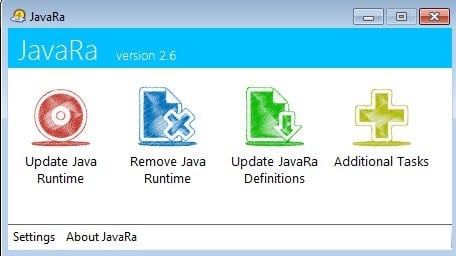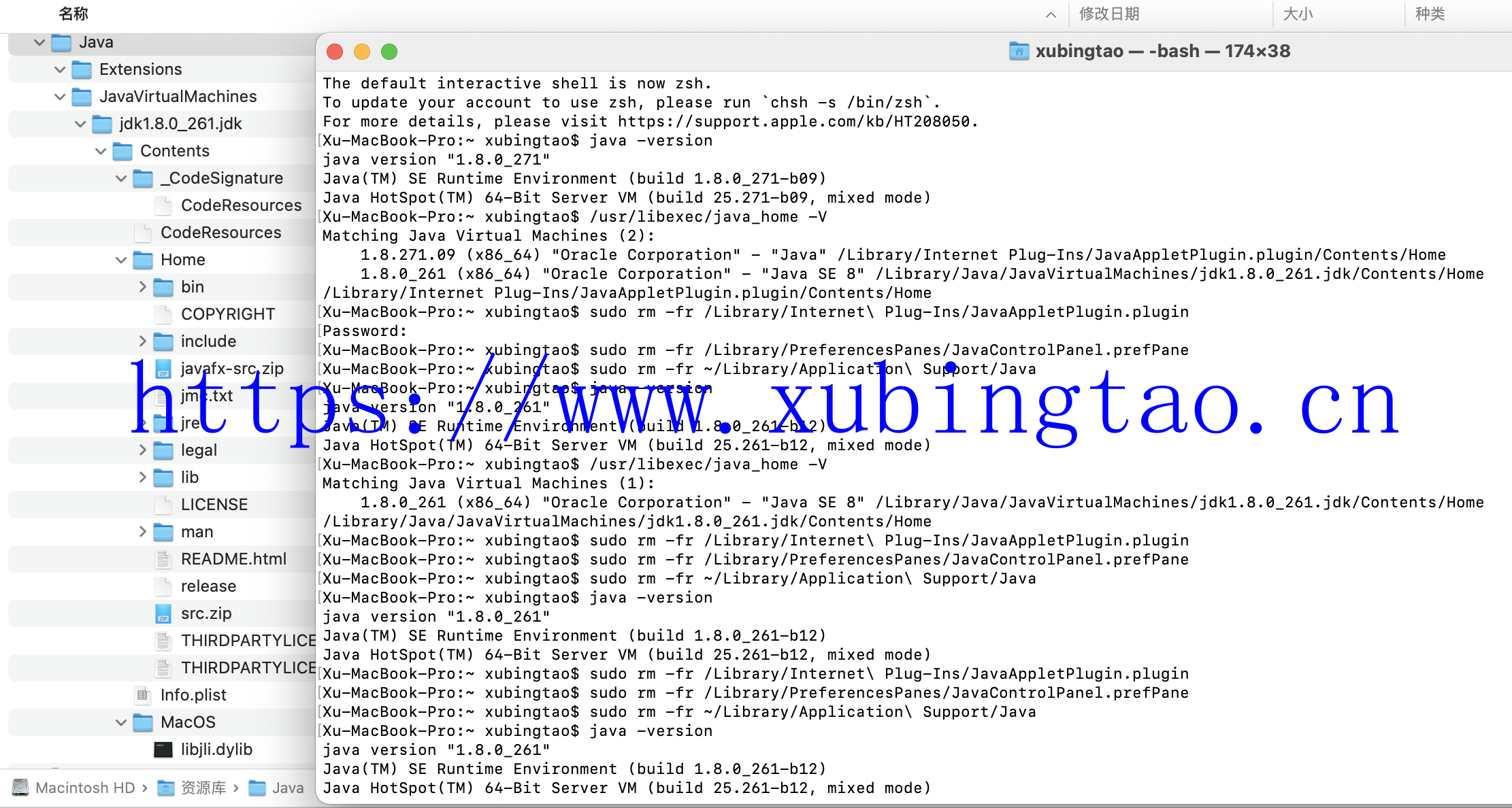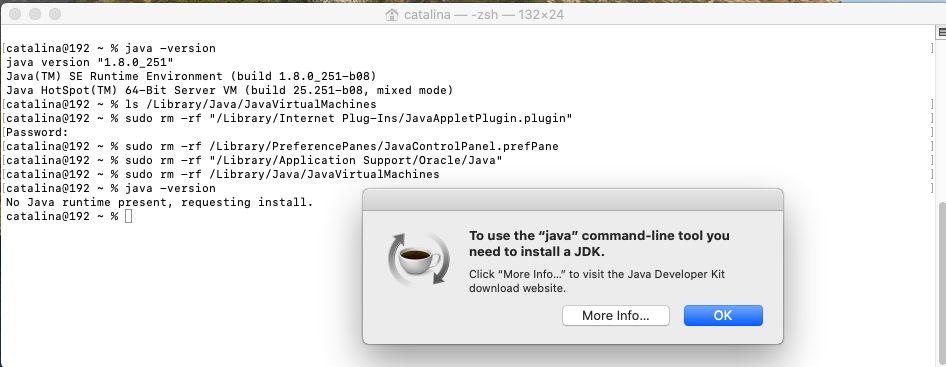
- #Uninstall java jdk mac os x how to
- #Uninstall java jdk mac os x for mac os x
- #Uninstall java jdk mac os x mac os
- #Uninstall java jdk mac os x install
- #Uninstall java jdk mac os x full
#Uninstall java jdk mac os x install
The system will not install a JRE that has an earlier version than the current version.
#Uninstall java jdk mac os x mac os
This means that the Apple-produced runtime will not be maintained at the same level, and may be removed from future versions of Mac OS X.
#Uninstall java jdk mac os x for mac os x
When you install the JRE, you can install only one JRE on your system at a time. As of the release of Java for Mac OS X 10.6 Update 3, the version of Java that is ported by Apple, and that ships with Mac OS X, is deprecated.

To install an earlier version of the JRE, you must first uninstall the current version. However, as of now, you can install and run non-notarized software on macOS 10.15 systems by modifying your security preferences. You can then use Terminal to remove Java by typing the following in Terminal: sudo rm -fr /Library/Internet Plug-Ins/ugin and press Enter sudo rm -fr /Library/PreferencePanes/JavaControlPanel.prefpane and press Enter. Therefore, we cannot certify any JDK version on macOS 10.15 yet. To determine the current JRE version installed on your system, see Determining the JRE Version Installed on macOS. Changes introduced with macOS 10.15 (Catalina) cause certain Java applications to behave incorrectly. However, the system will not replace the current JRE with a lower version. When you install the JDK, it also installs the JRE. Administrator privileges are required to install the JDK and JRE on macOS. Installing the JDK and JRE on macOS is performed on a systemwide basis for all users. You cannot install Java for a single user. Setting the JAVA_HOME variable can be based on the output of the tool /usr/libexec/java_home that retrieves the installation path of your Java.The following are the system requirements for installing the JDK and the JRE on macOS: The install should switch your Java version to the most recent version you just installed.
#Uninstall java jdk mac os x how to
As I’m writing this, Java 11.0.9 is the latest LTS (Long Term Support) version and AdoptOpenJDK is one of the best places to find Prebuilt OpenJDK Binaries.Easy to follow details about how to install OpenJDK are available here.

Simply run the installer and the JDK version will be updated. Since OS X 10.7 Java is not (pre-)installed anymore, let’s fix that. To update the JDK, download the latest version of the JDK from the Oracle website as described above. Updates are annoying, but have to be conducted anyway. The current version is printed at the bottom. In my case, there are three versions installed. The command will print out something like the following depending on the available JDK in your computer. First you need to run /usr/libexec/javahome -V command to get the list of installed JDK. Library/Java/JavaVirtualMachines/jdk1.8.0_131.jdk/Contents/Home In this post you will learn how to set the default JAVAHOME in Mac OS X when you have more than one JDK installed in your computer. You can check the version of the Java you are running by opening a new Terminal and typing java -version. You will need administrator rights to proceed with the installation. For an instruction on how to update Java see the sections below.Īfter the download, open the DMG file and run the PKG installer file that is contained. It is recommended to install the latest version and occasionally update the installed Java version. The file is packaged in Mac’s DMG installation file format. This bug covers the hotspot repo portion along with minimal supporting changes in other repos.
#Uninstall java jdk mac os x full
Before the download you have to accept the license agreement. The Full Debug Symbols (FDS) feature needs to be implemented on MacOS X in order to achieve parity with Linux, Solaris and Windows. Make sure to download the JDK, not the JRE (runtime environment).

The official JDK should be downloaded from the official Oracle Java website. So let us see how to install and update the Java Development Kit (JDK) on macOS on your own. Since macOS 10.7 Lion (2011) it is not pre-installed anymore. In macOS 10.6 Snow Leopard and below Java was pre-installed and shipped with your Mac. If you want to write some Java code on your Mac, you will need the JDK to run your code.

The Java Development Kit (JDK) is essential for Java developers and contains the Java runtime environment as well as the Java compiler and other Java libraries. This article explains how to install and update the Java Development Kit (JDK) on macOS, how to check Java version, and how to set the JAVA_HOME variable.


 0 kommentar(er)
0 kommentar(er)
